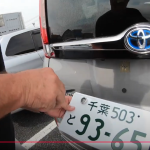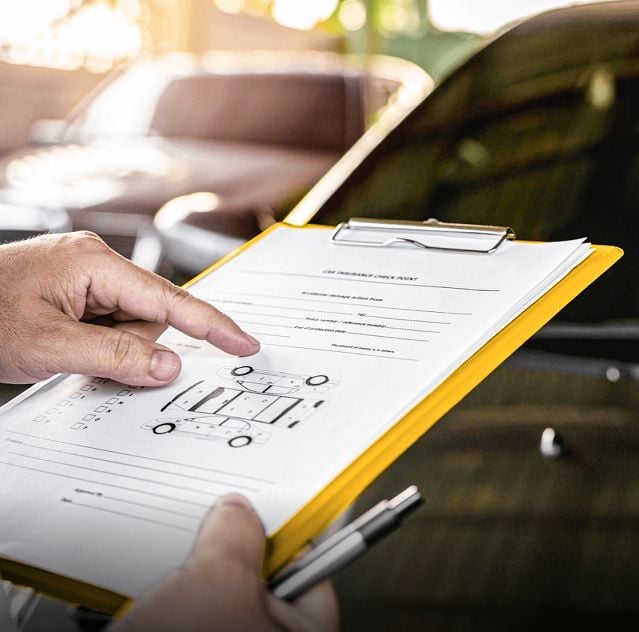

Understanding the Japanese Car Auction Sheet
Understanding the Japanese Car Auction Sheet: A Beginner’s Guide
Japanese car auctions are trusted around the world. Buyers love them for low mileage, clean cars, and transparency. But for newcomers, one thing often stands in the way: the auction sheet. If you don’t understand how to read it, you risk missing important details. And in car auctions, one small detail can make or break your purchase. This guide is written for beginners. We’ll show you how to read and interpret Japanese car auction sheets. We’ll explain the grades, the symbols, the diagrams, and everything in between. After this, you’ll be ready to bid smarter and safer. Let’s get started.
What Is a Japanese Car Auction Sheet?
It’s a report created by auction house inspectors. Every vehicle that goes to auction in Japan gets inspected. The inspector creates a document showing the condition of the car. This includes mileage, damage, repairs, engine notes, and overall grade. Think of it as a report card for the car. It’s objective. It’s independent. And it’s critical for buyers who aren’t in Japan. You don’t get to test drive the car. You don’t get to see it in person. The auction sheet is your primary source of truth. And that’s why learning to read it matters.
Why Buyers Trust Auction Sheets
Japan has strict rules for the used car market. Inspectors at major auction houses are trained and held to high standards. They do not work for the seller. They work for the auction. This makes the report more reliable than most dealer descriptions. Buyers know what they’re getting. That’s why exporters and importers use the sheet to make purchase decisions. It’s one of the main reasons why buying cars from Japan online is safe—if you know what you’re looking at.
Who Fills Out the Sheet?
Professional inspectors who work at the auction house. They check the body, interior, mechanical components, and history. They assign a grade. They use a standard set of codes. They write comments—often in Japanese. But exporters can translate those comments for you. At USS-NINJA.com, we translate and explain auction sheets for every client. Our job is to help you make informed decisions with full transparency.

Where Do You Get the Auction Sheet?
Your auction agent will send you a PDF or screenshot before you bid. These are usually available 24–48 hours before the car goes to auction. The sheet includes photos, grades, diagrams, and handwritten notes. Always review it carefully. If you don’t understand a section, ask your exporter. A good exporter will never push you to bid on a car you don’t understand. At ussninja.com, we make sure you never bid blind.
Main Sections of the Auction Sheet
- Vehicle Details
- Odometer Reading
- Transmission & Drive Type
- Engine Type
- Fuel Type
- Auction Grade
- Interior and Exterior Grades
- Inspection Comments
- Damage Diagram
- Service Records (if available)
Each of these gives you key information. Let’s go over them one by one.
Vehicle Details
This section includes the make, model, year, chassis number, trim level, and sometimes color. It confirms that the listing matches what you’re bidding on. Always cross-check this with your search filters. Some cars look similar across model years. Always verify the year and chassis code.
Odometer Reading
This shows how many kilometers the car has driven. Japan uses kilometers, not miles. Low mileage is common in Japan. Most used cars have under 100,000 km. If the mileage is suspiciously low, check for signs of tampering. Auction sheets will flag any odometer rollback with a special symbol.
Transmission and Drive Type
This tells you whether the car is automatic or manual, and if it’s FWD, RWD, or 4WD. Important for performance cars and SUVs. Many buyers overlook this. Don’t assume. Always check this box.
Fuel Type and Engine Size
Petrol, diesel, hybrid, or electric. Engine size is in CC (cubic centimeters). Japanese tax rules are tied to engine size. So many cars are under 2,000cc. This also affects import taxes in some countries.
Auction Grade: The Most Important Metric
The auction grade is a number (or letter) that summarizes the car’s overall condition. Here’s what the grades mean:
- Grade 6 or S: Brand new or near-new car
- Grade 5: Excellent condition with very low mileage
- Grade 4.5: Slight signs of use, but nearly perfect
- Grade 4: Clean car with minor cosmetic flaws
- Grade 3.5: Average condition, visible wear and tear
- Grade 3: Older car, may need work
- Grade 2: Poor condition, heavily used
- Grade R or RA: Repaired after an accident
If you’re new, stick to Grade 4 or higher. Grade 3.5 can be a good deal, but only if you understand the risks. R-grade cars are common among JDM collectors. They’re not necessarily bad—just previously repaired. You must read the comments and damage diagram to understand how serious the accident was.
Interior and Exterior Grades
These are separate from the main auction grade. They’re usually rated A (best) to D (worst). Interior Grade A means clean upholstery, no odors, no stains. Exterior Grade B might mean a few scratches. Grade C could include faded paint or small dents. A car can have a Grade 4 overall, but a Grade C interior. Always check these separately.
Inspector Comments
This section contains handwritten notes. These might include:
- Scratches or dents not shown in the diagram
- Rust or corrosion
- Smoke smell or pet odor
- Aftermarket parts or missing features
- Check engine light or dashboard warnings
This is where the real story often appears. Exporters translate these comments for you. If your exporter skips this step, ask for it. Some small issues might be no big deal. Others could cost you money after arrival. Know the difference.
Understanding the Damage Diagram
This is a top-down drawing of the car. Inspectors use symbols to show damage. Common codes include:
- A1, A2, A3 – Scratch (small to large)
- U1, U2, U3 – Dent (minor to major)
- W1, W2 – Wave or uneven surface
- X – Panel needs replacement
- XX – Panel was replaced
- P – Paint mark
- S1, S2 – Rust level
- C1, C2 – Corrosion level

The diagram helps you visualize the car. You can compare this with photos. If the photos look clean, but the diagram shows heavy marks, be cautious. Always use both together.
Symbols and Alerts
Some auction sheets use icons or stamps. A red mark may indicate structural damage. A checkmark could mean recent repairs. Some cars include a wrench symbol for maintenance history. Always ask your exporter what the symbols mean. Don’t guess.
Service Records and Ownership
Community Voices
“When I first saw an auction sheet, I thought it was a puzzle. After reading a few, I started spotting good deals. I haven’t made a bad buy since.” – Ben, UK
“I always go for Grade 4 or higher. But one time I got a 3.5 car that was cleaner than some Grade 4s. The diagram told the real story.” – Shilpa, UAE
“USS Tokyo sheets are very detailed. I’ve bought five cars and each one arrived as described. It’s all in how you read the sheet.” – Daniel, Canada
What to Ask Your Exporter
- Can you explain the inspector’s comments?
- Does this car have verified mileage?
- How serious is the damage on the diagram?
- Would you buy this car for yourself?
USS-NINJA.com. Your success is our success.
Summary: Key Takeaways
- The auction sheet is your most important document
- Grades, diagrams, and comments tell the car’s full story
- Grade 4 or higher is safest for beginners
- Always use a trusted exporter to interpret the sheet
- Never bid without fully understanding the condition
Ready to Start Bidding?
ussninja.com, we provide translated sheets, expert analysis, and access to Japan’s top auctions. Whether you’re buying your first car or adding to a fleet, our team is here to support you. View live auctions, ask questions, and place confident bids today. Join hundreds of global buyers who trust us with their imports. Let’s find your perfect car.

Frequently Asked Questions (FAQ)
Q: What is the best grade for resale value?
Grade 4.5 or higher generally has the best resale potential.
Q: What does R mean on the auction sheet?
It means the car has been repaired after an accident. Read the comments for details.
Q: Are auction sheets ever wrong?
Rarely, but mistakes can happen. Always use an exporter who checks condition in person if possible.
Q: Can I get a copy of the auction sheet after the sale?
Yes, your exporter should provide it for your records.
Q: What’s the most common damage noted?
Scratches (A1/A2) and small dents (U1/U2) are common. These are usually cosmetic.
Q: Can I buy a car with a bad grade and fix it?
You can, but budget for repairs and understand the risk.
Q: How fast do I have to decide?
Most auction listings are active for 24–48 hours. Always review the sheet quickly.
Table of Contents
Add a comment Cancel reply
Categories
- Auto Detailing (6)
- Car News (61)
- Car Reviews (50)
- Classic Cars (26)
- Importing Rules By Country (9)
- Japan Car Auctions (14)
- JDM (21)
- News (4)
- Uncategorized (31)
Recent Posts
About us

I am not one for writing articles actually so most of these articles come from contributors that I have met over the years or with a little help of supporters.
If you have any desire to import a car from Japan or simply need some advice get in touch via Whatsapp here at +81-90-5400-6384
Looking For That Special Car Has Never Been Easier.
Finding the right car in Japan is not always easy and finding the best partner in Japan to help you with this is sometimes even harder.
With over 25 years buying history and great contacts all over Japan I can help you in every way.
Get hold of me today!
Popular Tags
Related posts


Japan Car Auctions vs. Local Dealerships: Which Is Better for Import Buyers?


Is It Safe to Buy a Car Online From Japan? A Real Buyer’s Guide


What Happens After You Win a Car at a Japanese Car Auction?







